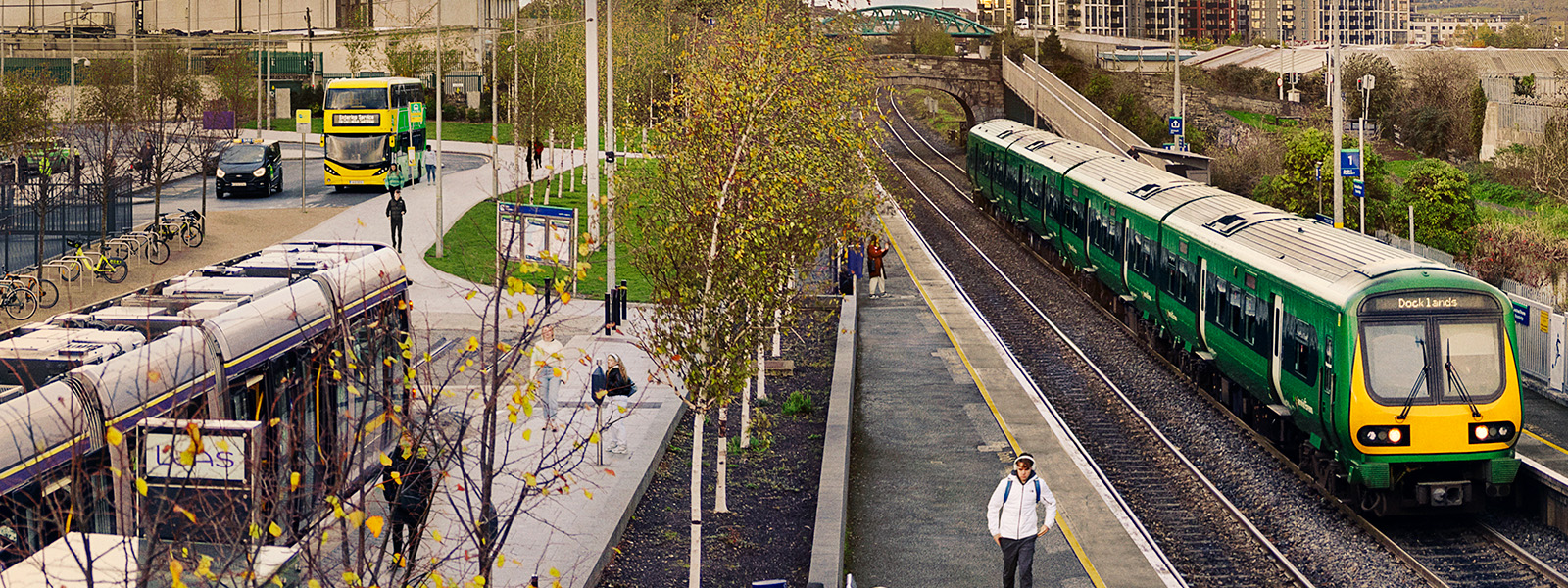The National Transport Authority (NTA) is publishing the first of two parts of its fare determination today, which deals specifically with monthly and annual tickets and will take effect on December 1. Monthly and annual tickets account for some 15% of all fare revenue.
Details of other cash and TFI Leap fares will be published in February and will take effect at the end of March.
One of the factors determining the fare changes is the move to a simplified fare structure in the Dublin area, as envisaged under our BusConnects plan.
The BusConnects programme for Dublin will see the transformation of Dublin’s bus system to ensure journeys made by bus will be fast, reliable, punctual, convenient, and affordable.
To deliver on this part of the programme, a revised fare structure is required for public transport in the city that will support seamless movement between different public transport services and modes without a financial penalty.
This is likely to mean that as the new bus network is rolled out, monthly and annual fares in the Dublin area will become consistent across all public transport, regardless of operator. Today’s announcement marks a move in that direction.
Some annual and monthly fares are to be adjusted upwards, while others are to be adjusted downward, but many will stay the same.
There is no change to either the rail-only annual or monthly ticket for the Short Hop Zone, which will remain at €1,450 and €145 respectively.
The corresponding bus-only tickets will increase slightly from €1,400 and €140 to €1,450 and €145 respectively. This covers routes operated by both Dublin Bus and Go-Ahead Ireland.
The annual and monthly Luas-only tickets increase by 7.4% to €1,300 and €130.
However, customers using a Luas/Dublin Bus/Iarnród Éireann ticket for the SHZ will see their monthly fare fall 4.9% from €205 to €195 and from €2,050 to €1,950 for an annual ticket.
Annual and monthly tickets for Iarnród Éireann commuters are virtually unchanged. There will be no increase in fares for passengers between Dublin and towns such as Enfield, Newbridge, Wicklow, Kildare, Drogheda, and Portarlington.
Annual tickets for Bus Éireann passengers in the Eastern Commuter areas will drop by over 4%. Passengers in towns such as Ashbourne, Kilcock, and Celbridge will see their fare fall from €1,548 to €1,480.
Passengers in Drogheda, Trim, Newbridge, and Baltinglass will be saving over one hundred euro when their annual fare drops from €2,448 to €2,340, with passengers in Dundalk, Mullingar and Arklow making an even greater saving of €118.
There is good news for Bus Éireann customers in the regional cities as well, particularly for students, with monthly fares dropping 12% from €59.50 to €52 in Limerick and Galway. In Cork the fare drops 6% from €156 to €146.
The Authority is setting fares for 2020 by way of two fares determinations. The first determination outlines adjustments for all monthly and annual tickets (including Taxsaver tickets) with an effective implementation date of 1 December 2019. The second determination will address adjustments for all other fares and will be published in March 2020 with changes effective in April 2020.
This approach was taken this year for a number of reasons. By delaying the process of determining a large proportion of fares to April 2020, the Authority will have greater clarity with regard to the level of PSO subvention available for the incoming year, and therefore on the revenue requirements for subsidised public transport services.
Secondly, the Authority, being mindful of prevailing economic conditions, wishes to ensure that adjustments in fares can be equitably made for the benefit of the travelling public and operators alike, in light of these circumstances.
Furthermore, the introduction of fare adjustments in April 2020 will allow the Authority to have a much clearer indication of the most up-to-date trends in public transport usage from the preceding year when making its determination.
Anne Graham, CEO of the National Transport Authority, said:
“The NTA will continue to work to make fares as simple and consistent as possible. In today’s determination we have seen some fares go up slightly and some come down.
Overall fare revenue will increase by less than 2%, which is in line with inflation, so this is certainly not a revenue-generating exercise.”
More information on the fare determination can be found here.
